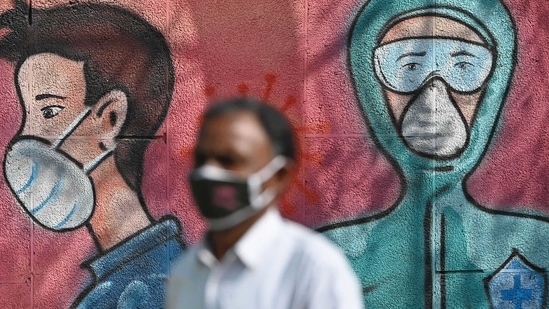Covid-19: What the next 45 days will mean for India
Maharashtra is driving the second wave, accounting, on some days over the past month, for as much as 65% of India’s daily new case tally.
The fact that India is seeing a second wave of the pandemic does not account for the mystery of the five months between early-to-mid-September and early-to-mid-February, when the number of daily cases dropped, from almost 98,000 to just over 10,000.

Nor does it for the numbers of Uttar Pradesh and Bihar, the states with arguably the worst public health infrastructure in the country, and with huge populations — 230 million and 130 million respectively, together well over a fourth of India’s 1.4 billion. Uttar Pradesh has thus far seen 615,996 cases, according to the HT dashboard (till March 30), and 8,800 deaths; Bihar, 265,268 cases and 1,574 deaths. India as a whole has seen 12.15 million cases in this period, and 162,523 deaths, so, UP accounts for 5% of India’s cases and Bihar, 2.18%. In terms of deaths, UP accounts for 5.15% of India’s deaths and Bihar, less than 1%. UP’s case fatality rate is 1.42%, Bihar’s 0.6% and India’s 1.34%.
Watch: How India could have avoided second Covid wave & why next 45 days is crucial
Both remain mysteries, with theories put forth to explain the numbers being just as valid or invalid as they were in late January and early February, when everyone was looking for an explanation for India’s prolonged lull.
But three things are clear.
One, India is in the grip of a second wave.
Two, Maharashtra is driving the second wave, accounting, on some days over the past month, for as much as 65% of India’s daily new case tally. As an aside, excluding Maharashtra, cases have still increased, from an average of around 7,500 in the first seven days of March to an average of around 25,000 in the seven days to March 30. That’s a much more acceptable rate of growth for any second wave. Which brings us to...
Three, the chances of one or more VOC as they are called (variants of concern, or, simply, mutant versions of the coronavirus) driving the infection in Maharashtra are very high.
The health ministry can continue to deny this till it is red in the face — just as it did when it came to community transmission during the first wave — but there is simply no denying the numbers.
India’s second wave, even Maharashtra’s second wave, are different from the first wave in one very important way: we now have the ultimate tools to fight them, two very effective and safe vaccines.
In their absence, India might have been looking at another prolonged lockdown at worst, or tighter restrictions on all activities at best. (Maharashtra may still have to impose a short-duration lockdown if it wants to prevent its health system from being overwhelmed by the surge in cases).
If their presence hasn’t prevented a second wave altogether, blame it on issues related to access (the government has been too narrow with its eligibility criteria), intent (India simply isn’t vaccinating enough), and vaccine hesitancy among people.
Which is why the new phase of vaccination starting April 1 is critical (it is now open to everyone over the age of 45). If India gets it right over the next 45 days, the economy will continue to make rapid strides towards normalcy (and even beyond), and the second wave will be brought under control by the middle, if not the end, of May. If it doesn’t, the country may be looking at more casualties from the infection, a prolonged second wave, sporadic lockdowns, continuing restrictions, and more pain for the economy.
Getting it right isn’t merely a function of access, intent, and acceptance — it is also one of behaviour. And on that aspect, India has been found wanting: from political parties to recreational and retail establishments of all hues to companies to the ordinary man (and woman) on the street participating enthusiastically in religious, social, or cultural gatherings, everyone flouts Covid-19 safety protocol.
Whether or not April 1 marks the beginning of the endgame in this phase of our fight against the coronavirus disease is entirely in our hands.






